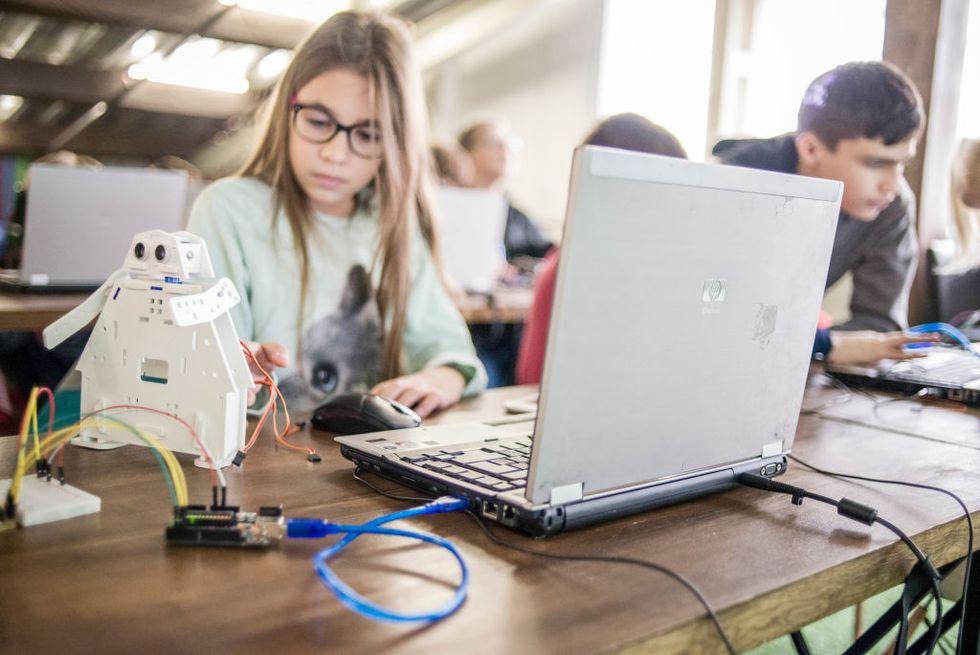
New technologies are dramatically transforming work and the global economy every day. This new age of automation creates new opportunities for businesses and governments, but due to gender barriers as old as time, the next generation of girls is at risk of being left behind. Science, technology, engineering, and mathematics (STEM) careers hold tremendous promise for millions of women—but only if new policies tackle access and education problems first.
By Meighan Stone and Rachel B. Vogelstein
In our recent report, we explain why the United States should increase its investment in STEM education for girls in the developing world and equip them to participate in the modern digital economy. Girls disappear from STEM studies as they progress through high school, assuming they even have access to secondary education. Worldwide, women account for just 35 percent of students enrolled in higher-education STEM subjects and less than 30 percent of students pursuing careers in information and communications technology (ICT) fields. By the end of tertiary education, women make up only 3 percent of ICT graduates globally.
Even where girls can access STEM education, most developing countries lack the “on-ramps” that help girls transition from the formal education system into the STEM workforce. In the world’s least-developed countries, only one out of seven women uses the internet, compared to one out of five men. In low- and middle-income countries, 184 million fewer women than men own cell phones. Cost, cultural norms, and family concerns about online harassment inhibit women from using new technologies.
Integrating STEM training into secondary education, improving girls’ access to STEM education, and helping girls transition into the STEM workforce is a smart long-term investment. The demand for critical thinking and STEM skills already outpaces education and training available across the developing world. Training girls today to become part of the modern digital workforce tomorrow will help grow entire economies and advance U.S. interests in global prosperity, poverty reduction, and economic growth. In India alone, the economy could grow by an additional 60 percent—or $2.9 trillion—by 2025 if women participated in the workforce to the same extent as men.
As part of its global commitment to women’s economic empowerment, we believe the U.S. government should take four steps to improve STEM opportunities for girls in the developing world: invest an additional $100 million in girls’ STEM education; improve gender-disaggregated data monitoring; leverage public-private partnerships to translate education into STEM employment; and encourage other nations to invest in girls’ STEM education. Boosting cost-effective investment in STEM education for women and girls would contribute to reducing poverty, and advance U.S. interests in global economic growth.
Inaction will exact a toll. A 2017 World Economic Forum report argues that it will take 217 years to close the economic gap between men and women if current trends persist. With technological change accelerating, failure to invest in girls’ STEM education and enfranchise women in the digital revolution will forfeit the economic potential of half the population. It’s a bad bet, and one the U.S. doesn’t have to make if it instead works with global governments to modernize girls’ education.

Discover more with RobotLAB!
Check our products page and discover different products that are ideal for your STEM classroom! And don't forget to take a look to our online learning platform Engage!K12 that offer a wide range of lessons for students and teachers !
